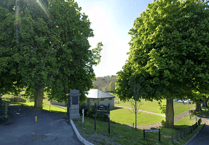FEARS that Dartmoor’s historic granite buildings could be left to fall down because redevelopment schemes don’t meet strict planning policies have been expressed by councillors.
Dartmoor National Park Authority’s development management committee narrowly backed a recommendation by officers to refuse plans for a farm diversification scheme at Broomhill Farm, Harford, near Ivybridge.
Members said they were “torn” over the decision.
Applicants Mr and Mrs J Cole wanted to convert a seventeenth century barn and cattle shed into a home and office for their son in the parish where the average price is £750,000.
Harford parish councillors supported it, saying they wanted younger generations to stay in the area where a new house hadn’t been built for 50 years and most old buildings had been converted into holiday lets.
The committee heard that although the shed had lost its roof and parts of its walls, it was suitable for rebuilding. If left, it would continue to deteriorate.
Both buildings are heritage assets and are some distance away from the main farm building.
Planning officers said the redevelopment was “high impact” and planning policies prioritised conservation of the national park’s natural beauty and cultural heritage over the economic and social wellbeing.
They said it would have a detrimental effect on the medieval field system which surrounded it and create a new residential use in an “isolated and unsustainable location”.
But they accepted that lower impact uses of the building had been considered and found to be unviable.
Committee member William Dracup said the granite barns were “so fantastic” in the countryside and they could just disappear if left.
“What effect would that have on the countryside and the medieval field system then?” he asked.
Deputy chair of DNPA Peter Harper said: “You cannot just rebuild barns. It is economically unviable. Buildings have evolved over years and future uses have to be brought forward for barns to be used. It seems to be that planning officers are just happy for them to fall down rather than grant another use.”
Mark Renders said the opportunity should be taken to bring the “beautiful buildings” back into use at a time when the area is crying out for homes for younger residents.
He said conditions could be put in place to tie the buildings to the farm and keep it as ‘local needs housing’ so it could not be sold for a higher price.
James Innes said it was a very difficult decision, but his prime purpose as a member of the national park authority was to protect the landscape.
“I do not think that anyone can kid themselves that someone moving into the middle of that huge rural area is not going to change the landscape,” he said.




